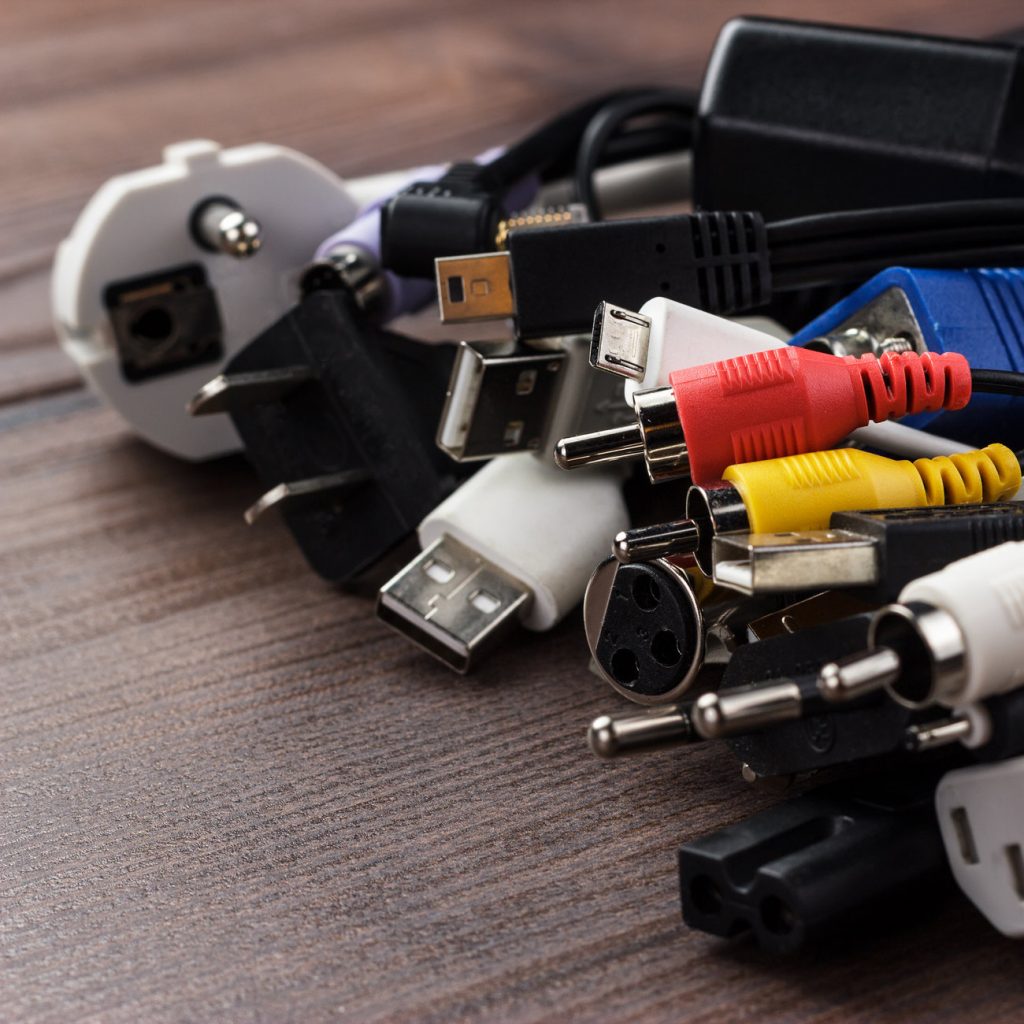
When you are buying a new computer or home theatre, the last thing that you think of is the cables. You only care about the device. How to connect it is just a boring procedure. However, are there any cases, when the cable length can lead to a problem? Let’s find out!
Analog signal
The analog signal is continuous and has a form of a wave with ups and downs. At your home, typical analog signal cables are the wires of your speakers, the VGA cable for your monitor or an old RCA cable (AV). These cables can suffer from noise. Changes in the waves can lead to disrupted sound or picture. Strong interference can completely block the signal. Another problem is degradation. There is simply not enough power to travel long distances. Shorter and thicker analog cables are generally better.
Speaker wires
Here resistance matters too. Check out this table from Audioholics.com for maximum length.
| Speaker Impedance | 8 Ohm Load | 6 Ohm Load | 4 Ohm Load |
|---|---|---|---|
| Wire Gauge | Distance ft./m | Distance ft./m | Distance ft./m |
| 18 AWG | 10/3.04 | 8/2.44 | 5/1.52 |
| 16 AWG | 20/6.08 | 15/4.57 | 10/3.04 |
| 14 AWG | 35/10.67 | 30/9.14 | 20/6.08 |
| 12 AWG | 60/18.29 | 45/13.72 | 30/9.14 |
| 10 AWG | 100/30.48 | 75/22.86 | 50/15.24 |
VGA cable
When we talk about VGA cables, video resolution matters a lot. For basic cables and high-resolution image, the limit is around 5-10 meters (16.4-32.8 feet) and up to 40 meters (131.2 ft.) for low-resolution (640×480). For VGA over CAT, it can reach 75 meters (246 ft.) (1024×768) and 300 meters (984.2 ft.) (640×480). (cablechick.com.au)
RCA cable (AV equipment)
Up to 20 meters (65.6 ft.) for CVBS & YPbPr Video and up to 10 meters (32.8 ft.) for 3.5mm audio (cablechick.com.au).
Digital signal
The digital signal is electrical and has a specific image. А very squared one. It is not continuous like the analog so you can see two values – 0 when there is no signal and a spike when there is a signal. The digital signals are less affected by noise, but the problem still exists.
USB cables
The USB cable has been around for ages. The most common ones now are 2.0 and 3.0/3.1 so we will focus on them.
USB 2.0
The longest USB 2.0 that you can have is around 5 meters (16.4 ft.) (yourcablestore.com). This is when we don’t have any active extensions.
USB 3.0/3.1
To have the best performance, try to keep it 3 meters (9.8 ft.) or less (yourcablestore.com). Yes, there are some brands that can provide better cables, but in general, this is the common maximum length.
HDMI
HDMI, the most common cable for video now. You are probably using it for your TV and computer.
The basic HDMI can go as much as 20 meters (65.6 ft.), the boosted or active one can go up to 40 meters (131.2 ft.) and HDMI over CAT can go up to 50 meters (164 ft.) (cablechick.com.au). We are talking about up to 1080p resolution. For 4k you’d better keep it under 5 meters (16.4 ft.).
How to go beyond the maximum cable length?
There are at least a few things that you can do to extend some of these cables. Many of them, like USB and HDMI, have the so-called active cables. The active cables need extra power. They can be battery-powered or connected to the electricity grid and can sustain the signal over longer distances.
The second option is to use a hub. It will have its own power and can maintain the signal over longer distances.
The third option – active repeater. It is a much simpler device than the hub. It just repeats the signal, but it can have its own power supply and sustain the signal.
Now you know what the maximum length of the most common cables is. You can be calmer when buying the next big gadget for your home or office.
Sources:
https://www.cablechick.com.au/blog/cable-length-guide/
http://www.yourcablestore.com/USB-Cable-Length-Limitations-And-How-To-Break-Them_ep_42-1.html
https://www.audioholics.com/audio-video-cables/speaker-cable-gauge
… [Trackback]
[…] There you will find 72883 more Info to that Topic: blog.neterra.cloud/en/when-does-cable-length-matter/ […]